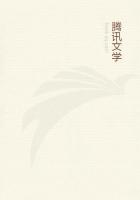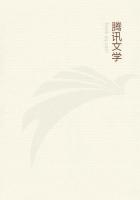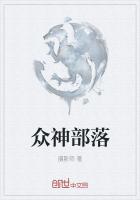The Indians sometimes kill the kangaroo;but their greatest destroyer is the wild dog,who feeds on them.Immediately on hearing or seeing this formidable enemy,the kangaroo flies to the thickest cover,in which,if he can involve himself,he generally escapes.In running to the cover,they always,if possible,keep in paths of their own forming,to avoid the high grass and stumps of trees which might be sticking up among it to wound them and impede their course.
[I once found in the woods the greatest part of a kangaroo just killed by the dogs,which afforded to three of us a most welcome repast.
Marks of its turns and struggles on the ground were very visible.
This happened in the evening,and the dogs probably had seen us approach and had run away.At daylight next morning they saluted us with most dreadful howling for the loss of their prey.]
Our methods of killing them were but two;either we shot them,or hunted them with greyhounds.We were never able to ensnare them.Those sportsmen who relied on the gun seldom met with success,unless they slept near covers,into which the kangaroos were wont to retire at night,and watched with great caution and vigilance when the game,in the morning,sallied forth to feed.They were,however,sometimes stolen in upon in the day-time and that fascination of the eye,which has been by some authors so much insisted upon,so far acts on the kangaroo that if he fixes his eye upon any one,and no other object move at the same time,he will often continue motionless,in stupid gaze,while the sportsman advances with measured step,towards him,until within reach of his gun.
The greyhounds for a long time were incapable of taking them;but with a brace of dogs,if not near cover a kangaroo almost always falls,since the greyhounds have acquired by practice the proper method of fastening upon them.
Nevertheless the dogs are often miserably torn by them.The rough wiry greyhound suffers least in the conflict,and is most prized by the hunters.
Other quadrupeds,besides the wild dog,consist only of the flying squirrel,of three kinds of opossums and some minute animals,usually marked by the distinction which so peculiarly characterizes the opossum tribe.
The rats,soon after our landing,became not only numerous but formidable,from the destruction they occasioned in the stores.Latterly they had almost disappeared,though to account for their absence were not easy.
The first time Colbee saw a monkey,he called 'wurra'(a rat);
but on examining its paws he exclaimed with astonishment and affright,'mulla'(a man).
At the head of the birds the cassowary or emu,stands conspicuous.
The print of it which has already been given to the public is so accurate for the most part,that it would be malignant criticism in a work of this kind to point out a few trifling defects.
Here again naturalists must look forward to that information which longer and more intimate knowledge of the feathered tribe than I can supply,shall appear.I have nevertheless had the good fortune to see what was never seen but once,in the country I am describing,by Europeans--a hatch,or flock,of young cassowaries with the old bird.I counted ten,but others said there were twelve.We came suddenly upon them,and they ran up a hill exactly like a flock of turkeys,but so fast that we could not get a shot at them.The largest cassowary ever killed in the settlement,weighed ninety-four pounds.Three young ones,which had been by accident separated from the dam,were once taken and presented to the governor.They were not larger than so many pullets,although at first sight they appeared to be so from the length of their necks and legs.They were very beautifully striped,and from their tender state were judged to be not more than three or four days old.They lived only a few days.
A single egg,the production of a cassowary,was picked up in a desert place,dropped on the sand,without covering or protection of any kind.
Its form was nearly a perfect ellipsis;and the colour of the shell a dark green,full of little indents on its surface.It measured eleven inches and a half in circumference,five inches and a quarter in height,and weighed a pound and a quarter.Afterwards we had the good fortune to take a nest.It was found by a soldier in a sequestered solitary situation,made in a patch of lofty fern about three feet in diameter,rather of an oblong shape and composed of dry leaves and tops of fern stalks,very inartificially put together.The hollow in which lay the eggs,twelve in number,seemed made solely by the pressure of the bird.
The eggs were regularly placed in the following position.
O
O O O
O O O O O
O O O
The soldier,instead of greedily plundering his prize,communicated the discovery to an officer,who immediately set out for the spot.
When they had arrived there they continued for a long time to search in vain for their object,and the soldier was just about to be stigmatized with ignorance,credulity or imposture,when suddenly up started the old bird and the treasure was found at their feet.
The food of the cassowary is either grass,or a yellow bell-flower growing in the swamps.It deserves remark,that the natives deny the cassowary to be a bird,because it does not fly.
Of other birds the varieties are very numerous.Of the parrot tribe alone I could,while I am writing,count up from memory fourteen different sorts.
Hawks are very numerous,so are quails.A single snipe has been shot.
Ducks,geese and other aquatic birds are often seen in large flocks,but are universally so shy,that it is found difficult to shoot them.

